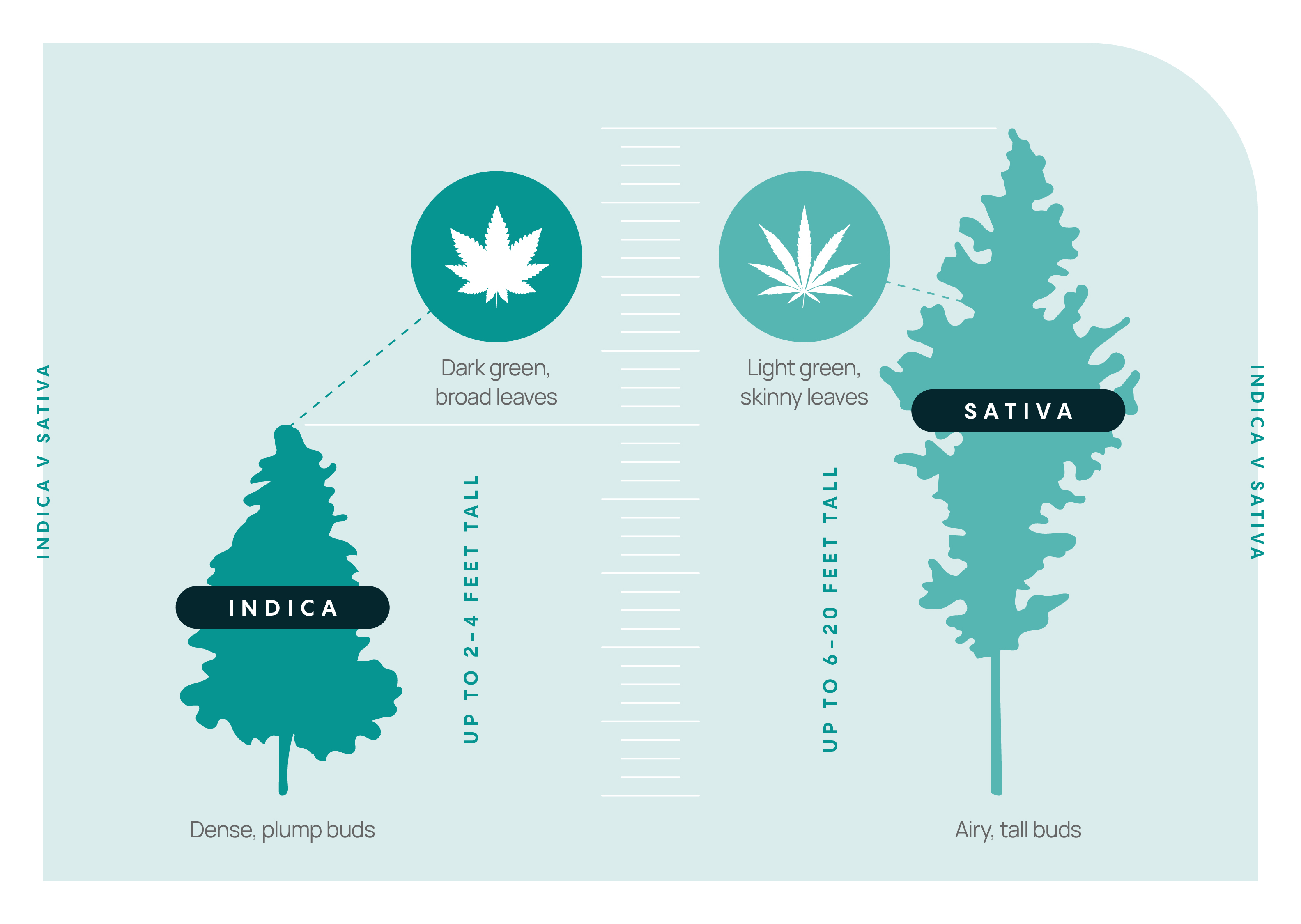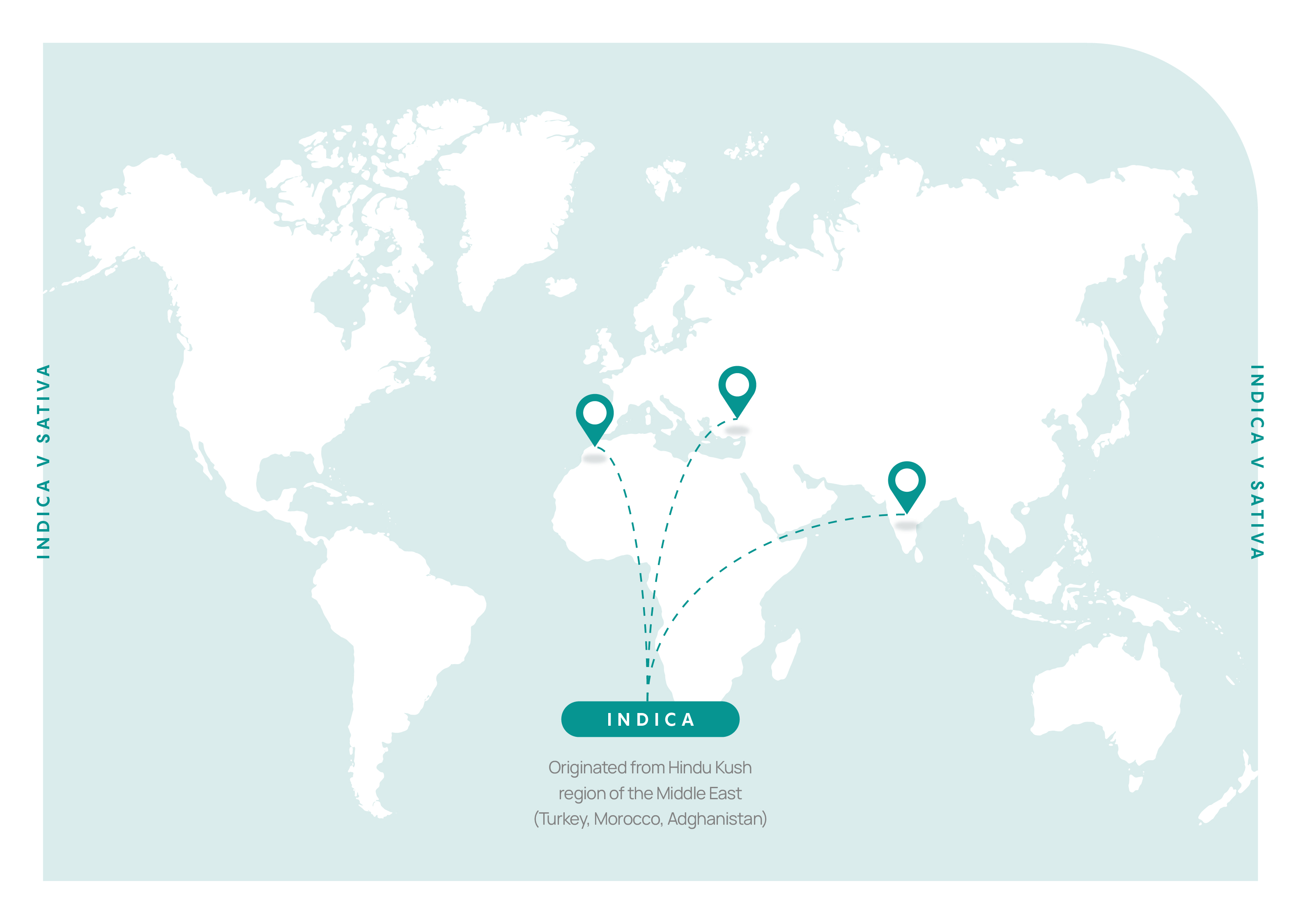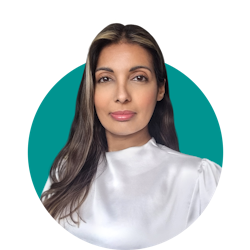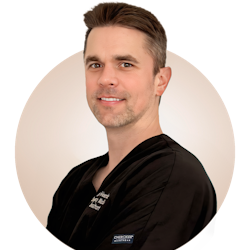Sativa vs Indica: What’s the Difference, Effects & Benefits
12 min read
Sarah Sinclair
The terms indica and sativa are widely used when talking about different types of medical cannabis, with each previously thought to have its own distinct therapeutic effects. But with little evidence to support this, experts are calling for a new, science-backed approach to classify products more accurately.
Contents
Indica vs. Sativa
The difference between Indica and Sativa cannabis strains genetically is actually non-existent, but the two 'groups' do potentially offer differing therapeutic effects. They all come from the one genus - Cannabis Sativa L.
Indica and sativa are two different subtypes of the cannabis plant and historically, the terms have been used to determine the effects of a particular strain or product. However, experts now widely agree that this approach is outdated and not backed by scientific evidence.
In this article, we take a look at the differences between indica and sativa, while exploring why many cannabis clinicians are moving away from these labels and instead focusing on terpene and cannabinoid content in order to provide more personalised care to their patients.
What's the difference between indica and sativa?
Click to enlarge image
Indica and sativa are the two primary classifications, or subspecies, of the cannabis plant. Rather than the effects they produce, these terms refer to the physical structure of the plant, each having its own distinct characteristics.
‘Sativa’ comes from the Latin word ‘sativum’ meaning ‘cultivated’.
The name Cannabis sativa L. is the full name for the cannabis plant, originating from 1753, when Carl Linnaeus classified all cannabis plants under this group in his Species Plantarum. ‘Cannabis’ was classed as the genus, ‘sativa’ as the species, and the ‘L.’ representing Linnaeus’ system.
In 1785, French biologist Jean-Baptiste Lamarck separated this into two distinct species: ‘Cannabis sativa’ and ‘Cannabis indica’, with Indica meaning ‘from India’, one of the regions where it was thought to originate from.
Despite a lack of scientific evidence to support it, these two subspecies are widely thought to have their own distinct effects. As a result the terms ‘indica’, ‘sativa’ and ‘hybrid’ have been used to label and categorise products for decades, with the aim of helping patients and prescribers identify which one best suits their needs.
But many experts now agree that these classifications may not be the best indicator of the effects of a particular strain or product. Instead, research is showing that the chemical profile of the strain, or in other words, the levels of cannabinoids and terpenes it contains, gives a far more accurate picture of its potential therapeutic effects.
But, before we dive into this further, it’s worth having a basic understanding of the key differences between indica and sativa.
What is indica?
Click to enlarge image
Indica plants originated in more northern regions such as India and the Middle East, in the likes of Afghanistan, Pakistan, and Tibet.
Their characteristics are generally shorter and bushier with wider leaves. As they grow in colder climates, their growing life cycle is shorter so they can be harvested before winter sets in.
Indica strains generally have a higher CBD content than sativas, and often a relatively balanced CBD to THC ratio.
Indica effects
While there is limited scientific evidence to support it, strains which come from Indica plants are typically thought to be sedative and relaxing. They are known for their physical and full-body effects and may be favoured by those looking to aid sleep or seeking pain relief.
What is sativa?
Click to enlarge image
Sativa strains are grown in warmer, more humid climates, such as Southeast Asia and Central and South America. The plants are typically taller with narrower leaves and take longer to grow and flower (or produce buds).
They tend to contain higher levels of THC than indica strains.
Sativa effects
Sativa strains are generally associated with uplifting and energising effects, with consumers often turning to these during the day to enhance creativity, focus, and sociability. But again, there is not enough scientific evidence to support this.
Are hybrid strains indica or sativa?
Now, many strains or products are identified as ‘hybrids’. As the name suggests, these combine characteristics of both indica and sativa.
Hybrid strains can occur naturally, but it is becoming increasingly common for cultivators to manufacture different genetic breeds. There are various reasons they may do this, such as to improve crop yield or balance out certain properties (e.g. THC and CBD levels) and to meet the demands of the market.
How do doctors decide if sativa or indica is better for their patients?
Emerging evidence and expert opinions increasingly suggest sativa and indica labels on medical cannabis products shouldn’t dictate how they should be used, or applied - at least not in the way they have been believed to.
In an interview from 2016, Dr Ethan Russo, one of the world-leading researchers in the field of medical cannabis, went so far as to describe these labels as “total nonsense”.
“There are biochemically distinct strains of Cannabis, but the sativa/indica distinction as commonly applied in the lay literature is total nonsense and an exercise in futility. One cannot in any way currently guess the biochemical content of a given Cannabis plant based on its height, branching, or leaf morphology, “ he says.
“The degree of interbreeding/hybridization is such that only a biochemical assay tells a potential consumer or scientist what is really in the plant. It is essential that future commerce allows complete and accurate cannabinoid and terpenoid profiles to be available.”
Who else thinks sativa and indica are outdated terms?
A number of recent studies have also been published supporting Dr Russo’s theory.
In a paper published in 2021, researchers at Dalhousie University studied hundreds of cannabis strains with indica and sativa labels, measuring the genetic profiles and chemical compounds, including cannabinoid and terpene content.
After comparing the genetic differences between strains, they found that the indica and sativa labels were ‘largely meaningless’.
Strains labelled indica were frequently just as closely related to strains labelled sativa as they were to other strains labelled indica. Instead, terpene content was more accurate as an indicator of the effects of each strain.
What difference do terpenes make?
Click to enlarge image
Terpenes are naturally occurring chemical compounds found in plants which are responsible for the aromas, flavours, and even colours they give off. They are found in cannabis (of course) but also in an array of other plants and foods, most commonly in aromatic herbs and citrus fruits and are the basic component in essential oils.
Terpenes are far less talked about than cannabinoids, but similarly they have their own therapeutic properties which contribute to the overall effect of a product, and play a crucial role in what is known as the ‘entourage effect’.
This is the theory, also put forward by Dr Russo, that the effect of all of the compounds working together synergistically is greater than any of them individually.
Research has found that terpenes mimic cannabinoids and produce similar pain-relieving effects, while other preliminary evidence suggests that some terpenes could have potential benefits for relieving stress, promoting sleep and as an anti-inflammatory.
Which terpenes are found in indica and sativa strains?
Many different terpenes could be present in cannabis, depending on the strain. However, some of those most commonly found in medical cannabis products include:
Myrcene
Myrcene is the most prevalent terpene in cannabis. It is known for its peppery scent and is found in other common plants like lemongrass, thyme and hop.
Caryophyllene
Caryophyllene is known for its spicy aroma and is found in cloves, rosemary, and hops. It is the only terpene known to interact with a cannabinoid receptor (CB2), and it offers a range of therapeutic benefits.
Limonene
Limonene produces a citrusy smell and, unsurprisingly, is often found in citrus fruits. Offers similar pain-relieving benefits.
Linalool
Linalool has a distinct floral aroma which is most commonly associated with lavender, but also found in citrus, laurel, birch, and rosewood. It is best known for its stress-relieving and sedative effects.
Pinene
Pinene has a woody aroma, responsible for the distinct scent of pine needles, conifers, sage, among others.
How are cannabis medicines labelled?
As of yet, there is no standard approach to labelling cannabis medicines by chemotype rather than plant type. However, researchers are exploring methods which might be more effective.
Scientists at the University of New Mexico established the world’s first cannabis flower indexing system, which is capable of distinguishing individual plant variants without the need for strain or product names.
The system identified distinct cannabis chemovars using four-character codes based on phytochemical potencies, including THC, CBD, and the primary and secondary terpenes detected.
In their paper, published in 2023, the authors argue that this system would allow healthcare providers, patients, scientists and retailers to more easily categorise products based on ‘measurable plant characteristics beyond THC and CBD, in ways that systematically relate to differing levels of symptom relief and side-effect reporting’.
Finding the right product for you
All of this may have left you feeling a little more confused when it comes to determining the right product for you. But Releaf’s team of experts are there to help you navigate the whole process.
Once you have completed the free eligibility checker, and requested your medical records, providing the clinical team feels it is appropriate, you will be invited to attend an initial consultation with a specialist doctor.
During this appointment you will have the opportunity to discuss your medical condition and specific requirements with the clinician, who will then prescribe the product they feel is most appropriate for you and your symptoms.
FAQS about indica and sativa cannabis
Is sativa or indica better?
There is no right or wrong answer to this one. It depends entirely on your personal preferences and medical needs, which may change over time.
Despite the lack of research, medical cannabis patients have typically been prescribed sativa-based strains to use during the day and an indica at night. However, most medical professionals now agree that it is more accurate to base these decisions on the chemical profile of each strain.
Which is stronger: sativa or indica?
Due to having potentially higher levels of THC, Sativa strains are generally said to be ‘stronger’ than indica. However, cannabis affects everyone differently and there are many factors which could influence how a product affects you.
These include:
- The dosage or how much you take
- Tolerance - tolerance builds over time so you may feel less effects than you did initially.
- Medical history
- Set and setting - where, when and how you administer your medication can impact the effects you feel from it (for example you may feel more anxious if you are medicating in public).
- Body chemistry - We all have our own unique endocannabinoid system which interacts with the cannabinoids in the product.
Which terpenes are typically found in ‘sativa’ strains?
While the terpenes present in cannabis sativa could vary widely, depending on the breeding and cultivation process, it is typically associated with fruity, citrus and floral aromas, such as limonene.
The team at Dalhousie University found ‘weak correlations’ between indica and sativa labels and certain terpenes, with terpenes such as farnesene and bergamotene apparently more common in sativa.
But, cannabis is a very complex plant, and there is a danger that using these terms may oversimplify its therapeutic properties and could even hinder wider understanding and acceptance of its use.
Which terpenes are typically found in ‘indica’ strains?
Terpenes most associated with indica strains include myrcene, beta-caryophyllene, linalool and humulene.
The researchers found that strains labelled indica tended to have higher amounts of myrcene, which is thought to contribute to the reported sedative effects.
Sativa v indica: drawing conclusions
While the indica and sativa labels have been helpful for some in identifying the right product for their needs, there is a growing push for producers of cannabis-based medicines to move away from this form of classification
This is especially important as the industry develops and more and more producers are experimenting with genetic profiling and hybridisation.
Share article
Did you like this article?
It is important to seek medical advice before starting any new treatments. The patient advisors at Releaf are available to provide expert advice and support. Alternatively, click here to book a consultation with one of our specialist doctors.
Elevate your wellness with medical cannabis
Get comprehensive care, convenience, and confidence with an all-in-one treatment plan.
Am I eligible?Authors
Sarah, a distinguished journalist with over a decade in publishing and communications, now excels in cannabis health and policy journalism in the UK, advocating for informed health decisions through her award-winning work.
compliance checked
Compliance Director
meet our specialist
Editorial Policy
All of our articles are written by medical cannabis experts, guided by strict sourcing guidelines, and reference peer-reviewed studies and credible academic research. Our expert clinical team and compliance specialists provide valuable insights to ensure accuracy when required. Learn more in our editorial policy.
Need more help?













